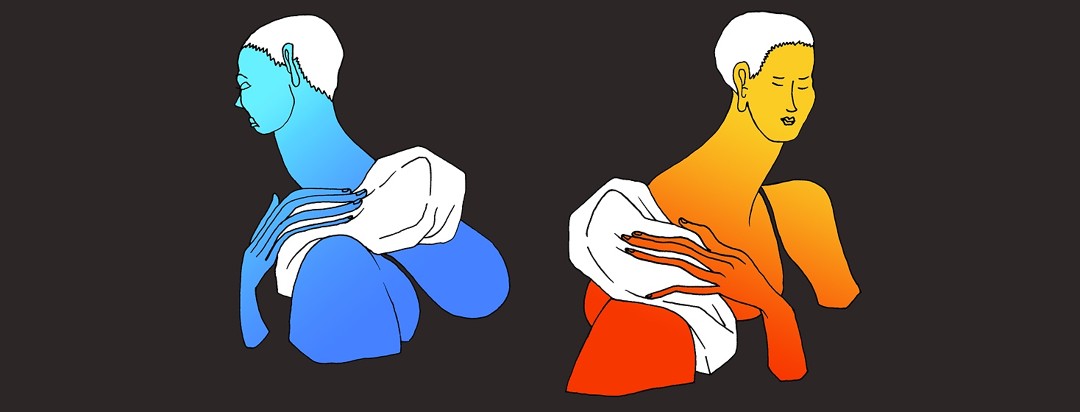Benefits of Hot and Cold Therapy for Psoriatic Arthritis
Using hot and cold therapy might be the ultimate home remedy for arthritis pain. It can be as easy as grabbing a pack of frozen peas to apply to a swollen joint or slipping into a warm bath to relax stiff muscles.1-4
You might be wondering exactly how hot and cold treatments help with arthritis pain. Understanding how they work and when you should use hot, cold or both therapies can help you find relief from psoriatic arthritis symptoms.
How does heat therapy work?
We have all been told to “warm-up” before exercising or doing a task that involves hard physical work. There is a reason this advice has been given for so long: it works. Warmth makes your blood vessels get bigger, which increases circulation. This means that more blood, oxygen, and nutrients flow to the joint or muscle that is in pain.1
Better blood flow to a joint or muscle helps to:2
- Relax stiffness
- Heal damaged tissues
- Increase flexibility, which makes movement more comfortable
How to use heat therapy
Think of heat therapy as a way to “melt” stiff joints and muscles. It can also be used to get your body ready for movement or activity or to help calm a muscle spasm. Do not use heat therapy if you have an acute injury, like a sprained ankle. You should also avoid heat therapy if you are having a flare-up of arthritis.1-3
Remember, heat increases circulation and swelling, so if the area is swollen and red, consider cold therapy (more on that below).1-3
When using heat therapy, make sure that it is warm and not hot. You do not want to burn your skin. Also, be sure to use it for at least 15 to 20 minutes. Give the heat time to warm the area down to the muscles and the joints. Drink water if heat therapy makes you sweat.1,2
Simple ways to use heat therapy at home include:1,2
- A warm bath or shower
- An electric heating pad
- A warm compress applied to the skin, such as a soft, rubber hot water bottle or a washcloth soaked in hot water
- Heat wraps, packs, and patches that you can buy from the store
How does cold therapy work?
While heat therapy helps joints and muscles relax, cold therapy does the opposite. Cold therapy decreases the flow of blood and joint fluid. This decreases inflammation and swelling.4
How to use cold therapy
Try cold therapy to reduce swelling and pain caused by arthritis or that happens after activity or exercise. It can be helpful after a muscle or joint injury. Cold therapy is also recommended for flare-ups of gout or pseudogout caused by arthritis.3
As with heat therapy, make sure that your cold therapy is not too cold. You also do not want to apply it directly to your skin, which can hurt. Instead, put a towel or cloth between the source of cold and your skin. Only use cold therapy for 15 to 20 minutes at a time.4
Do not use cold therapy if you have Raynaud’s Syndrome, cold allergies, nerve damage, or if it starts to hurt.4
Simple ways to use cold therapy at home include:4
- An ice pack from the store that you keep in your freezer
- An instant cold pack from the store and throw away after use
- A homemade ice pack made from ice in a plastic bag, a frozen towel, or sponge, or a bag of frozen vegetables such as peas. Another leak-free suggestion is to freeze a sock filled with uncooked rice.
When to switch between hot and cold therapy
Some doctors recommend switching between hot and cold therapies to help relieve arthritis pain. For example, heat therapy can help loosen up a stiff body when you wake up in the morning or before exercise. At the end of the day or after exercise, cold therapy can soothe sore or swollen joints and muscles.3
If you plan to use both hot and cold therapy on the same day, let 2 or 3 hours pass between each type.1,3

Join the conversation